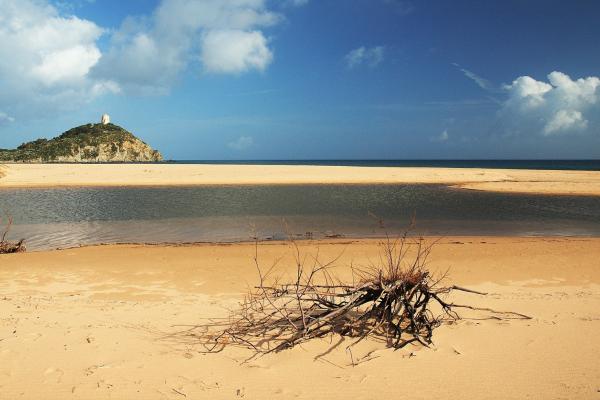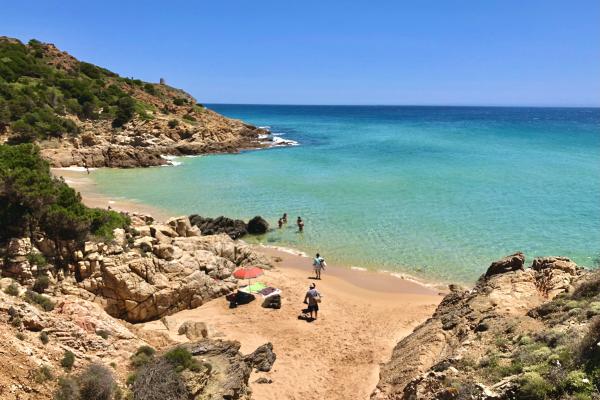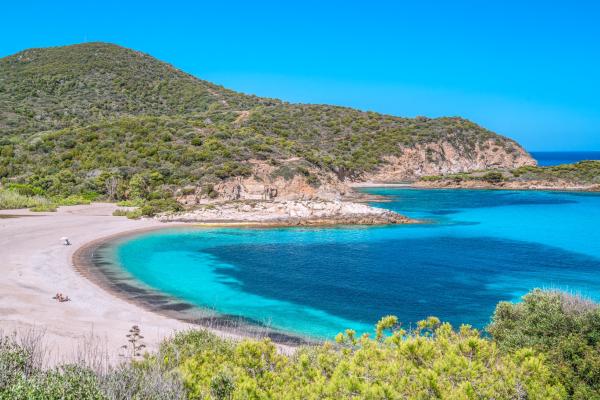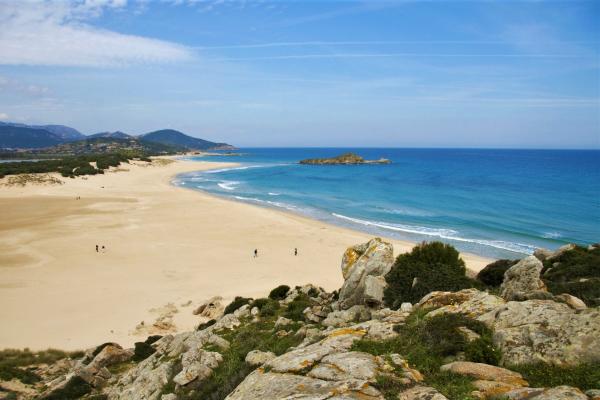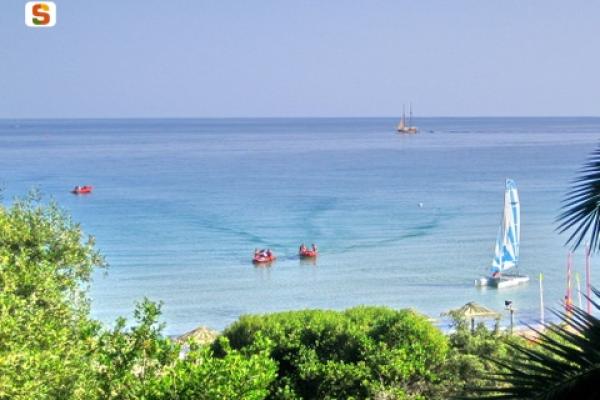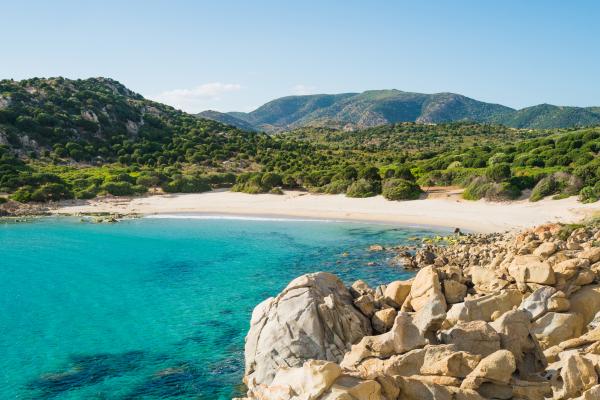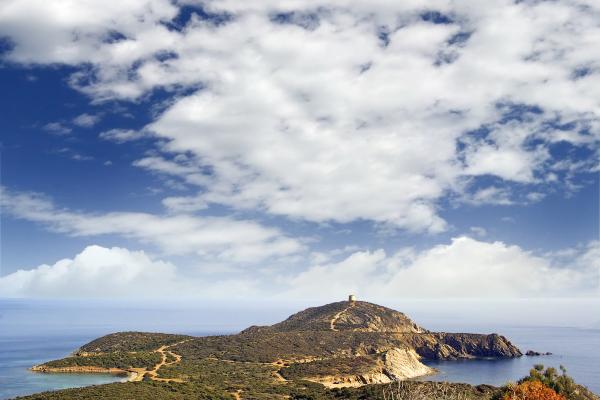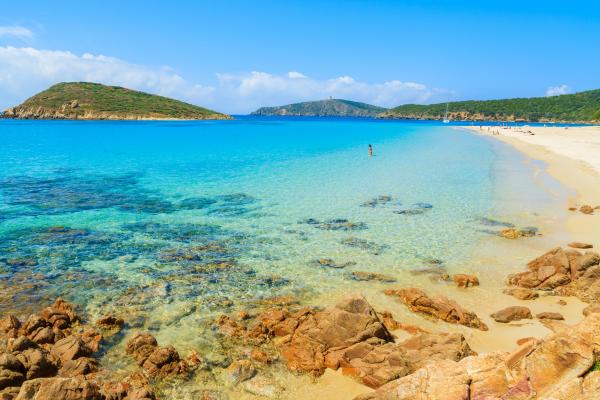The name evokes a past as a landing place, while today it is known for being the first beach, starting from the east, on the Chia seaboard and for containing the main historical and archaeological traces of the famous tourist resort that falls within the coastal territory of Domus de Maria. Su Portu is a crescent-shaped cove, about 250 metres long, between a cliff and the promontory dominated by the tower of Chia. It is surrounded by a ‘crown’ of Mediterranean vegetation, with a green pine forest behind it. You can admire an expanse of golden sand, with fine grains and a crystal-clear emerald green sea, with shallow waters near the shoreline and a seabed sloping gently towards the sea. There is no shortage of services: parking, refreshment areas, campsite and beach equipment rentals.
On the left of the beach, beyond a rock mass jutting out towards the sea, you will notice a second beach, which is smaller, more sheltered and ideal for those looking for relaxation in an intimate environment.
As well as the beauty of the surrounding landscape and the crystal-clear sea, Su Portu owes its charm to the archaeological remains in the surroundings. On the eastern side, behind the small beach, you will notice a path that enters the greenery. The route is part of the Roman road also mentioned in the Antonine Itinerary, which connected the ancient towns of Nora and Bithia. The remains of Bithia discovered so far, emerge on the sides of the beach, in particular on the promontory at the foot of the tower of Chia. Travelling along the Roman road in an easterly direction, you will see small hidden inlets and you will come to the islet of Su Cardulinu. It is connected to the coast by a strip of sand: ancient buildings once stood here, perhaps a Phoenician tophet first, and then a Punic temple.
An easy walk of about ten minutes will, instead, take you to the tower of Chia. From the top of the promontory you can enjoy a breathtaking view of the entire coast. The building was constructed starting from 1578 and its aim was to defend the mouth of the Rio Chia, targeted by pirates who wanted to stock up on water. It was a de armas or ‘strong’ tower, meaning that it was equipped with cannons and a garrison. Quite oddly, it was not in visual contact with the other coastal towers and, therefore, it required the support of mobile lookout posts. It is approximately 13 metres high, with a diameter of ten metres, and the entrance is raised five metres above the ground. The sunset, reflecting its warm colours that light up the sea, is the most captivating moment for admiring it.





